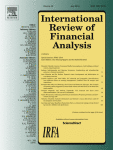An analytical review of volatility metrics for bubbles and crashes
Highlights
- Surveys previous significant studies on bubbles, crashes, and volatility
- Why do prices become secondary to quantity via the short-side rationed principle
- Adds new perspectives on defining and measuring bubbles, crashes, and volatility
- Introduces an extreme events line (EEL) and a crash intensity indicator
Abstract
Bubbles and crashes have long been an important area of research that has not yet led to a comprehensive theoretical or empirical understanding of how to define, measure, and compare such extreme market events. Highlights of the vast literature on bubbles, crashes, and volatility are surveyed and a promising direction for future research, based on a theory of short-side rationing, is described. The theory suggests that, especially in extreme market conditions, marginal quantities held or not held become transactionally more important than the prices paid or received. Our approach is empirically implemented by fitting monthly elasticity of return variances to an exponential expression. From this follows a comparison of changes in implied versus realized volatility, generation of an extreme events line (EEL), and a crash intensity comparison metric. These methods open a new perspective from which it is possible to analyze bubble and crash events as applied to different time scales and asset classes that include bonds, real estate, foreign exchange, and commodities.
Keywords
Bubbles; Crashes; Elasticity of variance; Extreme events line; Herding; Tranquility zone; Volatility

